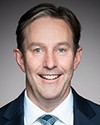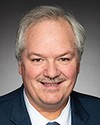That is a very good question.
I agree with what Dr. Soulez said a few minutes ago. There is a clear lack of funding in Canada to adequately help the health care system. I admit that the needs are enormous.
My biggest concern, Mr. Thériault, is that if we were to provide funding without knowing what goal we want to achieve or what changes we want to make in the system, we may end up in the same situation as in the past, when funds would be allocated to sectors with virtually no results.
I think that Canadians and even provincial premiers have a role to play. I have written to all the premiers as part of the Council of the Federation conference to let them know that we felt the federal government had to play a crucial role in the funding of the health care system, a more significant role than it is playing today. It must play that role strategically to meet each of the provinces' priorities.
For example, we have a $4.5-billion budget for mental health, but mental health encompasses a broad range of areas. Some provinces may prioritize certain areas of mental health, while others will not have the same priority. That is where we are asking our politicians to be a bit more flexible, in the sense that the government would be prepared to allocate funding to priority sectors while ensuring some accountability in terms of obtaining results. I think this is what Canadians really want to see today.
To answer your question, there is a considerable lack of federal funding for the provinces. According to the Deloitte study sponsored by the Canadian Medical Association, or CMA, it may cost up to $1.3 billion just to cover the care that has not been provided. The provinces don't currently have that kind of money, and I don't think they could provide hospitals with it.





